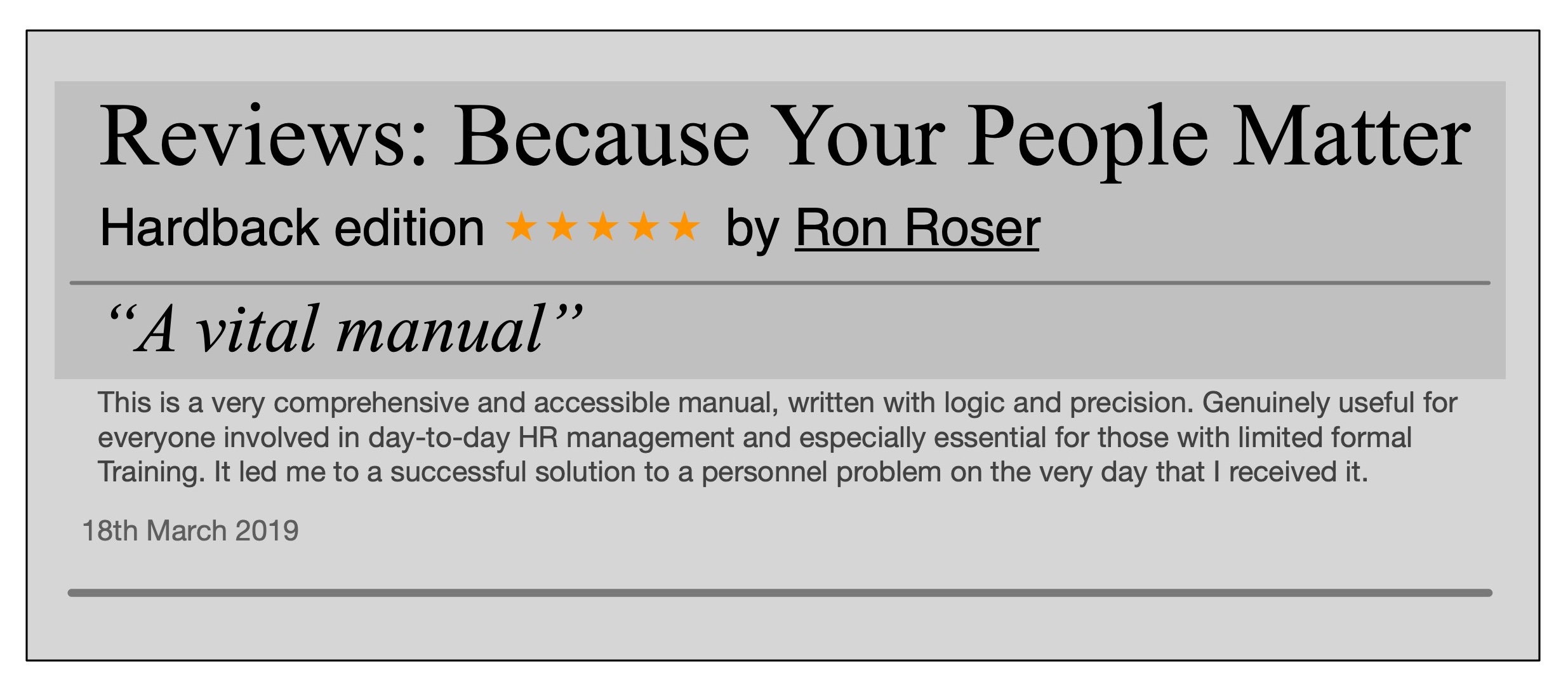One of twelve chapters of our book, Because Your People Matter: a playbook for managers, entrepreneurs, and leaders, serialised here.
Organising People: setting the scene about management
Written by John Berry & Sue Berry on 21st June 2022. Revised 14th December 2022.
4 min read
Chapter 1: Organising People
Chapter Summary
 Chapter 1 is an overview, setting the scene for the eleven chapters that follow.
Chapter 1 is an overview, setting the scene for the eleven chapters that follow.
We define the manager of a firm as the person who takes responsibility for the actions of their employees in the pursuit of agreed goals. The manager differs from other, perhaps more glamorous titles like ‘entrepreneur’ and ‘leader’. The ‘entrepreneur’ and ‘leader’ are simply management roles – generally, managers must be entrepreneurs and must lead. That distinction of manager as the person who elects to take responsibility, is crucial to the firm’s success.
Some might say that accepting responsibility is all that’s needed – because the skills and knowledge of management can then be learned on the job. There’s some truth in that.
Organising People
The manager is responsible for the creation and running of the firm - for organising people. The firm converts inputs to outputs using processes. This idea of treating a firm as a system allows the complexity of the firm to be abstracted and hence simplified. Simplification without loss aids understanding. The system can be measured for its ability to produce key performance metrics like turnover and profit and to do so with effectiveness metrics like productivity.
Since the manager creates the processes within the system, they can adjust those processes to optimise the desired outcomes. This gives rise to the central manager activity – intervention. The manager intervenes if they want change. The manager has an ever-growing intervention repertoire. It’s then a question of choosing the right intervention to effect the right change.
Employees work in the system of the firm with technology. The duality of employees and technology gives the firm its capability. In intervening, the manager can elect to adjust the employees and their competencies and behaviours or can adjust the technology.
Theory of the firm
In the beginning, firms start with an entrepreneur with a good idea. The entrepreneur produces goods and services for supply to their customer. There are then two key steps in the firm’s growth – the first when the entrepreneur sub-contracts to others to supply goods and services and the second when the entrepreneur hires some employees to serve in producing the goods and services. Both enable growth. This distinction between supplier and employee is important and many managers confuse the two. In this book we drive a clear wedge between the two and focus on employees.
As the firm grows and hires more employees, its structure becomes ever-more important. Humans are social beings and employees work together in social groups. This interaction aids the firm in achieving its goals but is also the source of much of the manager’s worry.
The firm’s goals are defined in its strategy. A strategy is a statement of what the manager and the employees will do to meet the goals. We define simple ideas about how to state a firm’s strategy.
Systems modelling
Having said that systemising the firm will simplify, the manager does need to elaborate to characterise the system components – its employees and its technology. We describe a method of concept modelling taken from the field of systems dynamics. Using concept modelling, we describe how the firm can he described, and hence built.
Management is about change and hence change can be managed by modelling what is, and what will be. The difference between the present and intended states is the motivation for action.
Following our declared positivist approach, we describe in this chapter how it is that the manager sets up their system, setting it running to achieve its aims, and we describe how the manager intervenes. Positivism is about establishing the dependencies between the variables – the links from employee competencies and behaviours to business outcomes. We portray the manager as an incessant intervener, knowing the links and adjusting to achieve the desired goals.
An overview
Chapter 1 is an overview. In the following eleven chapters, we discuss how such interventions on the human resource of the firm are made to best effect. In those eleven, we discuss a mix of management theory stemming from the science of psychology, the professions of the law and economics and from a modicum of politics too.
Few managers are trained. Few managers get management right so there’s much to be learned. We hope that you read on and enjoy the learning experience.

